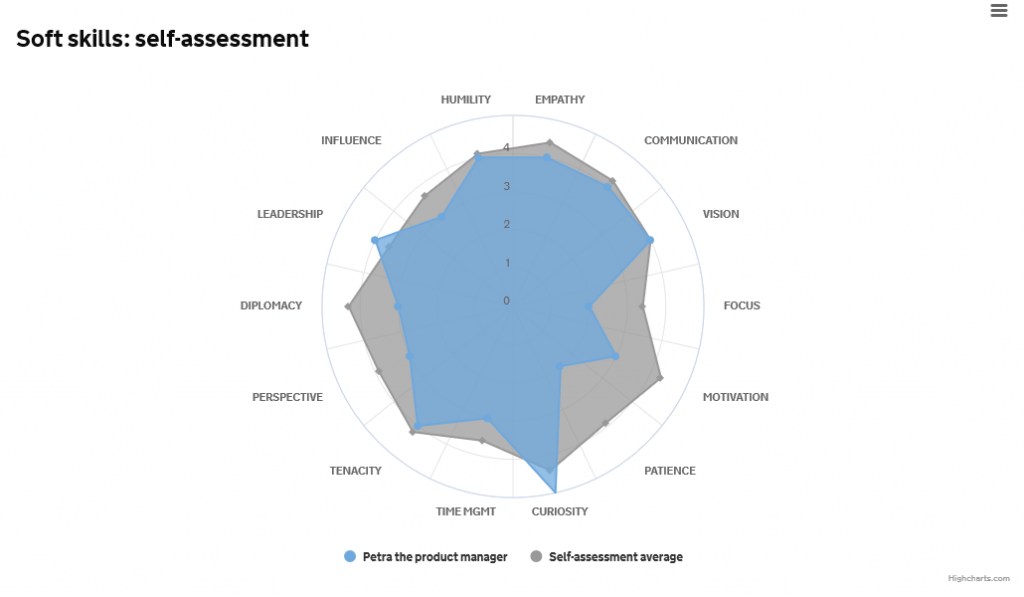
Getting your first job as a product manager
Getting your first job as a product manager can seem impossible. Thankfully it’s not! I share my advice on how to break into a career in product management.
In this article #
People are often put off trying to become a product manager because they pull up the job adverts and run into a chicken-and-egg problem: they all need you to have product management experience to secure a job, but you don’t yet have a product management job to gain that experience.
Don’t let this discourage you!
Almost all of the most successful product people I’ve met didn’t plan to become a product manager to begin with. Many were promoted internally into the role. Even then, while some realised it matched up fairly well with what they were already doing, others had to Google what a product manager was and adapt quickly.
Nowadays, the role is much better understood, and there are many communities of professionals worldwide waiting to offer you their help. In this article I’ll share my advice on ways to break into your first job in product management.
Identifying and filling your skill gaps
Benchmark your current skills

I’m guessing you already appreciate what a product manager is and does. (If not, read my book and the rest of this blog. It’s product management all the way down.)
The fact that you’re looking for a product manager job in the first place hopefully indicates that there’s a good overlap between your current set of skills and the skills you’ll need as a product manager. Nevertheless, it’s entirely expected that you’ll have gaps.
To help you figure out the main gaps and where you need to focus your learning, I’ve put together a free self-assessment survey that takes you through the fundamental skills of a product manager. I’ve also written about the approach if you’d like more information first.
If you do take the survey, send me a message afterwards to confirm who you are and I’ll share with you (yes, still for free) a Google doc that benchmarks your results against an average taken from a range of your product manager peers. This will highlight the fundamental skills you need to work on. And of course, your survey results will remain confidential.
Product management training
Then to go about filling some of those skills gaps, there’s plenty of product management training available. I offer live and recorded training specifically about becoming a product manager, and landing and starting your product manager job.
At the beginning of each of my courses, I remind people that they’re not going to emerge after only a day or two of training as a fully-formed product manager, like a butterfly emerging from a chrysalis.

There are lots of ways to do product management well, but context matters. So rather than teaching a specific process or technique, which would only work in certain situations, I help people to start thinking about the ‘why’ of product management first. Once that’s understood, then the techniques (the ‘how’) can follow.
A good outcome for my trainees is for them to realise how much more there is to learn (there always is). But because they now understand the ‘why’, the ‘how’ becomes much easier to figure out and apply to their situation.
Internal promotion

Internal job moves should in theory be the best outcome for both you and the organisation you work for. After all, it can be much simpler to segue from one job to another within the same company, and your company retains your accumulated knowledge and experience, while saving on recruitment and onboarding costs.
There are however pros and cons to this approach. On the positive side:
- You don’t have the same level of risk as you remain employed for the duration
- You retain the working relationships you’ve built up and don’t have to start over
- Any employment benefits you’ve accrued will remain with you
However, on the down side:
- By definition, you’re letting your company know you’re no longer satisfied by your current role and want to move
- You’re probably good at your existing role, so this may create a disincentive for the line manager who will be ‘losing’ you to recommend you for the promotion (yes, people can be that petty sometimes)
- You might be ‘typecast’ in your current role — if you’re known as (for example) a really good tech support person, then you’ll have to work extra hard to stop everyone forever associating you with that role
- If you’re not successful, this can sour your relationship with the company, and you’ll probably end up leaving anyway
- Negotiating a salary increase can be harder — unscrupulous companies will often make you an incremental salary offer based on what you’re currently earning, rather than what the market rate for a product manager is
Other ways into product management
Shadowing
If internal promotion isn’t an option, it’s still a good idea to spend some time shadowing the product managers in your organisation if you can. And if you have them, shadow your user researchers, designers and senior developers / engineers also. You’re going to be working closely with these professions in particular, so the more you understand about them, the better.

If you don’t have product people to shadow at your organisation, try reaching out via the various product management communities to see if someone would be willing to let you shadow or intern with them.
Associate product manager positions
When looking for your first product manager role, seek out organisations that advertise associate product manager roles. These are structured a little like an apprenticeship, and should not require previous product management experience, so you can build up your skills and experience safely and with support from a more experienced practitioner.
Some organisations may also have a specific career development programme or academy to help people move into the profession. I’ve compiled a short list of these to get you started in the further reading section (#notsponsored).
A product owner role is a dead end

I’m just going to come out and say it. A product owner role is a dead end for a career in product management.
Throughout most of my career as a product manager, there’s been a ferocious debate raging about whether a product manager and a product owner are the same thing. They’re not.
I used to be more charitable in my view about this, but with the benefit of hindsight I’ve become more polarised. I’ve found that most organisations that advertise a product owner role are looking for a very specific, process-oriented position. More often than not, these organisations expect product owners to be backlog jockeys, solely to keep the delivery team fed with user stories prescribed to them by a more senior stakeholder.
They have limited influence on the direction of the product, often with no access or incentive to research user needs. They’re a servant of the process, whether it’s Scrum or SAFe or something else. They’re not expected to question whether there’s any value to users in the thing they’re building.
In other words, product owners are given no opportunity to develop their product management muscles. Once you find yourself in this role, it’s really hard to escape. This is why I’ve come to regard the product owner role as a dead end. Avoid.
Once you’re a product manager

When you’ve successfully made your way into a product management role, well done! Now the learning really starts.
You’re going to be expected to become good at the ‘technical’ aspects of being a product manager, such as your product’s vision, strategy, roadmap, pricing, research, design, delivery and user experience, but the real challenge is actually all the associated messy people stuff.
Your ability to progress up the career ladder as a product manager will depend on your ability to bring the right products from idea to market, in the right way, and to enable them to be successful by whatever measures your organisation expects.
But to do all this, you are going to need to work well with your users, your delivery team, your stakeholders, partners and suppliers, and possibly your organisation’s senior management team. There’s a lot of people involved, and not all of them are going to see things in the same way.
Your success as a product manager is predicated on your ability to work well with people, even if you don’t always see eye-to-eye on things. Anyone can learn how to craft a product roadmap — it’s just a technique. But learning how to work well with people is a lifelong quest.
Further reading
Inclusion in this resource list does not imply endorsement, nor am I receiving any remuneration for including them.
Product management communities
ProductTank — product management meetups both live and online in most major cities worldwide
Product in the (A)Ether — product management support network for existing PMs and those seeking to get into product management
List of Slack groups for product managers on ProdPad’s blog
List of product manager communities on ProductPlan’s blog
List of online and offline product communities on The Hive Index
Associate product manager programmes
Typically organisations offer associate product manager roles in conjunction with structured buddying, mentoring and training to help you fill the skill gaps and gain hands-on experience.
Understandably, there are well-established APM (or equivalent) programmes at the usual suspects: Google, Meta, Microsoft, LinkedIn and, err, Uber. Whether you feel inclined to join any of them is a different question :-)
Schmidt Futures has an APM programme and is geared towards social good.
This list of APM programmes by Exponent also seems useful.
In the UK, Civil Service Jobs has finally added text search to their service, so you can now search for associate product manager roles in the public sector.


Leave a Reply